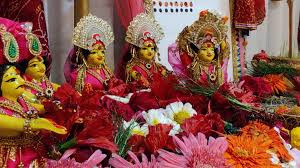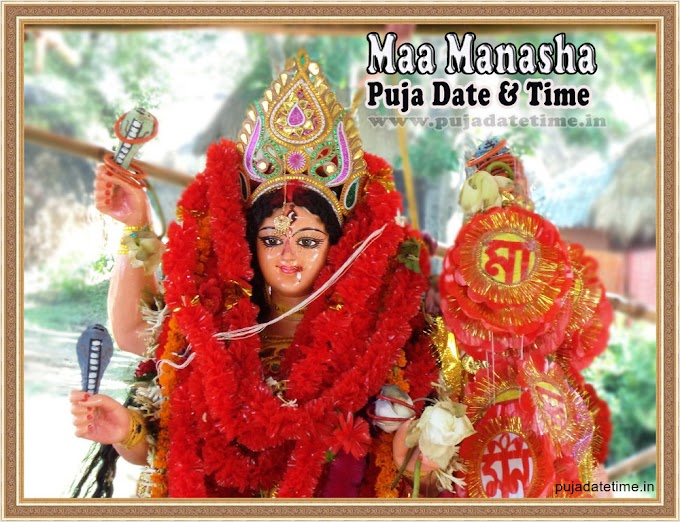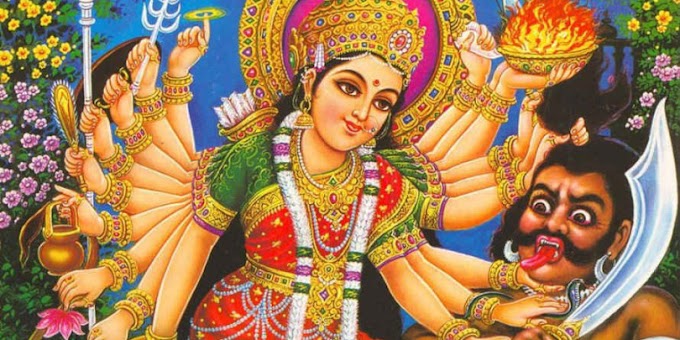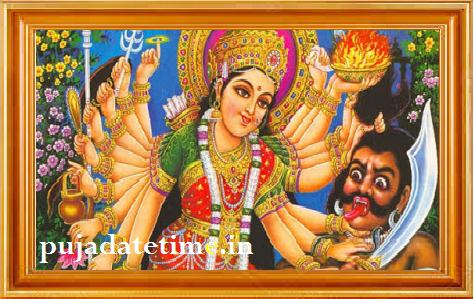 |
Gangaur Puja |
Gangaur Festival and its significance in Rajasthan
Gangaur Festival is one of the most important festivals celebrated in Rajasthan, India. It is a colorful and vibrant festival that celebrates the divine union of Lord Shiva and Goddess Parvati. This festival is mainly celebrated by women who worship the Goddess for marital happiness and happiness. It is an occasion for people to come together, forget their differences and celebrate the spirit of unity, happiness and togetherness. This festival holds great importance in Rajasthan as it is believed to bring good luck, prosperity and happiness to married women. It also showcases the rich cultural heritage of Rajasthan and is an ideal opportunity for the visitors to experience its grandeur and beauty.
how it is a celebration of love and togetherness
Gangaur Festival is a celebration of love and togetherness as it commemorates the divine union of Lord Shiva and Goddess Parvati, two deities who are symbols of love and devotion. The festival is mainly celebrated by women who pray for the well-being and longevity of their husbands. It is also an occasion for unmarried girls to seek blessings from the Goddess for a good husband in the future. This festival brings together people from all walks of life, regardless of their caste, creed or religion. It promotes unity, happiness and togetherness and encourages people to forget their differences and come together as a community to celebrate the spirit of love and devotion. The festival showcases the rich cultural heritage of Rajasthan and is an ideal opportunity for people to experience its grandeur and beauty while celebrating love and togetherness.
Legend behind the Gangaur Festival
According to legend, Goddess Parvati was deeply in love with Lord Shiva and wanted to marry him. He kept a strict fast and prayed for 108 years to win her heart. Eventually, Lord Shiva was impressed by her devotion and agreed to marry her. The day of their divine union is celebrated as Gangaur Mahotsav. It is believed that during this time, Goddess Parvati visits her parents' house, and married women observe a fast and pray to Gangaur Mata (Goddess Parvati) for the well-being and longevity of their husbands. Unmarried girls also seek the blessings of the goddess for a good husband in future. The festival holds great significance in Rajasthan, where it is believed to bring good luck, prosperity and happiness to married women. Beautifully decorated idols of Gangaur Mata and Isarji (Lord Shiva) are displayed in grand processions during the last three days of the festival, highlighting the essence of love and devotion between the divine couple.
legend associated with the festival - the divine union of Lord Shiva and Goddess Parvati
 |
| Image: https://en.wikipedia.org/wiki/Gangaur |
I will be happy to share more about the legend associated with Gangaur festival. According to legend, Goddess Parvati was deeply in love with Lord Shiva and wanted to marry him. However, Lord Shiva was a recluse who lived in the mountains and did not pay much attention to worldly affairs. Undeterred by this, Goddess Parvati observed a strict fast and prayed for 108 years to win his heart.
Finally, Lord Shiva was impressed by her devotion and agreed to marry her. The day of their divine union is celebrated as the Gangagar festival. It is believed that during this time Goddess Parvati visits her parents' house and married women fast and pray to Gangaur Mata (Goddess Parvati) for the well-being and longevity of their husbands.
Unmarried girls also seek the blessings of the goddess for a good husband in future. The festival holds great significance in Rajasthan, where it is believed to bring good luck, prosperity and happiness to married women. The grand procession on the last three days of the festival showcases beautifully decorated idols of Gangaur Mata and Isarji (Lord Shiva), epitomizing the love and devotion between the divine couple.
importance of the festival for married women seeking marital bliss
Gangaur festival holds great significance for married women who seek marital bliss and happiness. During the festival, women observe a strict fast and pray to Gangaur Mata (Goddess Parvati) for the well-being and longevity of their husbands. Married women decorate clay pots with intricate designs and place them on their heads, symbolizing their devotion to the goddess.
The festival is also an occasion for married women to wear traditional Rajasthani attire, adorn themselves with beautiful jewelery and sing traditional folk songs while performing aarti (a Hindu ritual of worship). This festival not only strengthens the bond between husband and wife but also celebrates the essence of love, devotion and faith.
Moreover, Gangaur Festival is an ideal occasion for married women to come together, share their experiences and enjoy the spirit of friendship and brotherhood. It is believed that by observing the fast and performing the ritual with devotion, married women will be blessed by the Goddess, bringing prosperity, happiness and good luck to their household. Therefore, this festival is of utmost importance for married women seeking marital bliss and is a reminder of the sanctity of marriage in Indian culture.
Celebration of the Gangaur Festival
Gangaur Festival is celebrated over a period of 18 days and is one of the most vibrant festivals of Rajasthan. The festival begins on the first day of Chaitra, the first month of the Hindu calendar, which falls between March and April every year.
During the festival, women wear traditional Rajasthani attire and adorn themselves with beautiful jewellery, mehndi designs and sing traditional folk songs. They carry earthen pots on their heads, which are decorated with intricate designs and filled with water. These pots are considered symbols of life, growth and abundance.
 |
| Image: https://en.wikipedia.org/wiki/Gangaur |
The festival also includes various cultural programs like traditional plays, puppet shows and folk dances. People come together to enjoy delicious food, sweets and shop for traditional handicrafts and artefacts. The festival creates an atmosphere of joy, happiness and togetherness among the people and is an ideal opportunity to experience the rich cultural heritage of Rajasthan.
18-day long festival and its various rituals
The Gangaur Festival is celebrated over a period of 18 days, and each day holds significance with different rituals and customs. Here is a brief description of the various rituals observed during the festival:
- Days 1-3: The first three days of the festival are dedicated to the worship of Lord Shiva and include fasting, bathing and worshiping the deity.
- Days 4-7: On the fourth day, women begin preparations for the festival by collecting clay, flowers and other materials to decorate pottery. The next three days are devoted to the worship of Goddess Parvati, where women observe a fast and pray for marital bliss and happiness.
- Day 8-10: The eighth day marks the beginning of the grand procession, where beautifully decorated idols of Gangaur Mata and Isarji (Lord Shiva) are taken out in a parade around the city. The next two days are spent enjoying cultural programs like traditional plays, puppet shows and folk dances.
- Days 11-14: During these four days, women celebrate the festival by performing aarti (a Hindu ritual of worship) and singing traditional folk songs. They decorate their houses with flowers and beautiful rangolis (ornamental designs made on the floor).
- Day 15-16: These two days are devoted to the worship of Teej Mata, who is believed to be an incarnation of Goddess Parvati. Women keep a fast and pray for the prosperity and long life of their husbands.
- Days 17-18: The last two days of the festival mark the end of the grand procession, where the beautifully decorated idols of Gangaur Mata and Isarji are immersed in water, marking the end of the festival.
Overall, the festival is a celebration of love, devotion and togetherness, with various rituals and customs highlighting its rich cultural heritage.
Detailed description of the grand procession that took place in the last three days
The grand procession is one of the most important events of the Gangaur Festival. It takes place during the last three days of the festival and includes a colorful parade with beautifully decorated idols of Gangaur Mata (Goddess Parvati) and Isarji (Lord Shiva).
The idols are placed on beautifully decorated palanquins, which are carried by dancing men to the beats of drums and trumpets. The procession also included camels, horses and elephants dressed in traditional Rajasthani attire. Colorfully dressed men and women sing and dance to traditional Rajasthani music, adding to the festive atmosphere.
The procession passes through the streets of the city and stops at various places for offerings and prayers. People come out in large numbers to witness the grandeur of the procession and offer prayers to the divine couple, seeking blessings for prosperity, happiness and good health.
The procession ends with the immersion of the beautifully decorated idols of Gangaur Mata and Isarji in the water, which marks the end of the festival. The immersion is accompanied by loud cheers, music and festivities, which marks the end of the 18-day long festivities.
The grand procession is an integral part of the Gangaur festival and reflects the essence of love, devotion and togetherness among the people. It is an ideal opportunity to experience the rich cultural heritage of Rajasthan and witness the grandeur of the festival.
Highlight the traditional Rajasthani attire, jewellery, and music associated with the festival
Gangaur Festival is an ideal opportunity to witness the rich cultural heritage of Rajasthan. Traditional dress, jewelery and music are integral parts of the festival and add to its grandeur and beauty. Here is a brief description of each:
Traditional Dress: Women wear traditional Rajasthani dress during the festival. It consists of brightly colored ghagra-cholis (long skirts with blouses) or lehenga-cholis (long skirts with short kurtis), usually made of silk, cotton or chiffon. The outfits are embellished with beautiful embroidery, mirror work and other intricate designs, which makes them look fabulous.
Jewelry: An essential part of Rajasthani culture, jewelry plays an important role during the Gangaur Festival. Women adorn themselves with a variety of jewellery, including necklaces, earrings, bangles, anklets and maang tikka (a piece of jewelery worn on the forehead), made of gold, silver or precious stones. Jewelery is often intricately designed and handmade, which makes them unique and beautiful.
Music: Music is an integral part of the Gangaur Festival and adds to the festive atmosphere. Traditional Rajasthani songs and folk music are sung during the festival accompanied by instruments like dholak, harmonium, tabla and shehnai. The songs reflect the essence of love, devotion and togetherness, making them a must listen during the festival.
Overall, traditional dress, jewelery and music form an essential part of the Gangaur Festival, bringing out the rich cultural heritage of Rajasthan. They enhance the grandeur and beauty of the celebration, making it an unforgettable experience for the visitors.
Regional variations of the Gangaur Festival
While the Gangaur Festival is primarily celebrated in Rajasthan, it is also celebrated in other parts of India with some regional variations. Here are a few examples:
Gujarat: Gangaur Festival in Gujarat is known as Gauri Tritiya. It is celebrated on the third day of Chaitra (the first month of the Hindu calendar) and marks the beginning of the new year. Women observe a fast and worship Goddess Gauri for marital happiness and prosperity.
West Bengal: Gangaur Festival is celebrated as Charak Puja in West Bengal. It is celebrated on the last day of Chaitra and is dedicated to Lord Shiva and Goddess Kali. Men dress up in Lord Shiva costumes and ride around the city on chariots while people throw sweets and flowers at them.
Madhya Pradesh: Gangaur festival is celebrated as Gauri Puja in some parts of Madhya Pradesh. It is celebrated during the Sharad Navratri festival, which usually falls in September or October. For marital happiness and prosperity, women keep a fast and worship Goddess Gauri.
Overall, Gangaur Festival may have some regional variations, but its essence of love, devotion and togetherness remains the same across different regions of India.
Discuss how the festival is celebrated across Rajasthan
Gangaur Festival is celebrated with great enthusiasm all over Rajasthan. Although the rituals and customs are similar, there are some variations in the way the festival is celebrated in different parts of the state. Here are a few examples:
- Jaipur: In Jaipur, the festival is celebrated with a grand procession that passes through the streets of the city with decorated elephants, horses and camels. The idols of Gangaur Mata and Isarji are taken out in a procession that includes traditional folk dances, music and cultural performances.
- Udaipur: This festival is celebrated on a large scale in Udaipur. The women wear traditional Rajasthani attire and carry beautifully decorated earthen pots on their heads. The procession moves around the city and stops at various places for offerings and prayers.
- Bikaner: This festival is celebrated with great pomp in Bikaner. Women carry earthen pots filled with water and flowers on their heads and walk around town singing traditional songs. A grand procession is also taken out, which includes beautifully decorated idols of Gangaur Mata and Isarji.
- Jodhpur: This festival is celebrated with great enthusiasm in Jodhpur. Women wear traditional dresses and perform traditional folk dances like Ghoomar and Kalbelia. A grand procession is taken out, which includes beautifully decorated idols of Gangaur Mata and Isarji.
Overall, though there may be some regional variations in the Gangaur Festival, it is a celebration of love, devotion and togetherness, which brings people from all walks of life together to celebrate the rich cultural heritage of Rajasthan.
The way it is celebrated in parts of Gujarat, West Bengal and Madhya Pradesh
Apart from Rajasthan, Gangaur Festival is also celebrated in other parts of India with some regional variations. Here are a few examples:
Gujarat: In Gujarat, the Gangaur festival is known as Gauri Tritiya and is celebrated on the third day of Chaitra (the first month of the Hindu calendar). Women observe a fast and worship Goddess Gauri for marital happiness and prosperity. They decorate the idols of the Goddess with flowers and perform traditional dances like Garba and Dandiya.
West Bengal: Gangaur Festival is celebrated as Charak Puja in West Bengal. It is celebrated on the last day of Chaitra and is dedicated to Lord Shiva and Goddess Kali. Men dress up in Lord Shiva costumes and ride around the city on chariots while people throw sweets and flowers at them. The festival celebrates the arrival of spring and the beginning of the new year.
Madhya Pradesh: Gangaur festival is celebrated as Gauri Puja in some parts of Madhya Pradesh. It is celebrated during the Sharad Navratri festival, which usually falls in September or October. For marital happiness and prosperity, women keep a fast and worship Goddess Gauri. They decorate their houses with flowers and perform traditional dances like Garba and Dandiya.
Overall, Gangaur Festival may have some regional variations, but its essence of love, devotion and togetherness remains the same across different regions of India.
Significance of Gangaur Festival
Gangaur Festival is an important festival of Rajasthan that celebrates the divine union of Lord Shiva and Goddess Parvati. Some of the major significance of this festival are as follows:
- Celebration of love and devotion: The festival celebrates the love and devotion between Lord Shiva and Goddess Parvati, highlighting the importance of marital harmony and togetherness.
- Prayers for Marital Happiness: Married women observe a fast and pray for the well-being and longevity of their husbands, seeking blessings from Goddess Parvati. Unmarried girls also seek the blessings of the Goddess to get a good husband in future.
- Cultural Significance: The festival showcases the rich cultural heritage of Rajasthan by showcasing traditional dress, jewellery, music and dance. It brings people from all walks of life together, displaying the essence of unity and harmony.
- Social Significance: The festival provides an opportunity for married women to come together, share their experiences and enjoy the spirit of friendship and brotherhood.
- Agricultural Significance: The festival marks the arrival of spring and the beginning of the new year, a symbol of new beginnings and growth.
Overall, Gangaur Festival holds immense significance in Rajasthan, bringing people together to celebrate love, devotion and togetherness and to showcase the rich cultural heritage of the state.
How festivals bring people together irrespective of caste, religion or creed
Gangaur festival is a celebration of love, devotion and unity that unites people irrespective of their caste, religion or creed. Here are some ways the festival promotes unity and harmony:
- Cultural Diversity: The festival reflects the cultural diversity of Rajasthan, with people from different communities coming together to celebrate the festival. It gives people an opportunity to showcase their rich cultural heritage and learn about each other's traditions and customs.
- Inclusive nature: The festival is inclusive and encourages the participation of people of all ages, genders and backgrounds The rituals and customs associated with the festival are open to all irrespective of their religious beliefs.
- Social Bonding: The festival acts as a platform for social bonding, where people come together to share their experiences, exchange ideas and strengthen their relationships. Married women, especially, come together to celebrate the essence of friendship and sisterhood.
- Community Building: Festivals encourage community building by bringing people together for a common purpose. It creates a sense of unity and promotes a spirit of unity and harmony.
- Non-discriminatory: The festival does not discriminate against anyone on the basis of their caste, religion or creed. People from all walks of life can participate in the festival and get the blessings of the Goddess.
Overall, Gangaur festival promotes unity and harmony by bringing people together irrespective of caste, clan or religion. It celebrates the essence of love, devotion and unity, showcasing the rich cultural heritage of Rajasthan while promoting inclusion and social bonding.
How it promotes unity, happiness and harmony
Gangaur festival is a celebration of love, devotion and unity that promotes unity, happiness and social bonding among people. Here are some ways the festival promotes these values:
- Unity: Festivals bring people from different communities together, promoting unity and harmony. It gives people an opportunity to showcase their rich cultural heritage and learn about each other's traditions and customs.
- Joy: The festive atmosphere of Gangaghar festival brings joy to people's lives. People dress vibrantly, participate in cultural events and pray for blessings from the divine couple spreading joy and positivity.
- Coming together: The festival encourages a spirit of unity by bringing together family, friends and the community. Married women come together to celebrate the essence of friendship and sisterhood, while others participate in community events and cultural events to strengthen their relationship.
- Social Bonding: The festival acts as a platform for social bonding, where people come together to share their experiences, exchange ideas and strengthen their relationships. It creates a sense of unity and promotes a spirit of unity and harmony.
- Expression of devotion: The festival provides an opportunity for people to express their devotion to Shiva and Goddess Parvati. People pray, fast, and perform traditional rituals, strengthening their faith and deepening their spiritual connection.
Overall, the Gangaur festival promotes togetherness, happiness and unity by bringing people together to celebrate the essence of love, devotion and unity. It showcases the rich cultural heritage of Rajasthan while promoting inclusion, social bonding and spiritual growth.
In conclusion, Gangaur festival is a significant festival that celebrates the divine union of Lord Shiva and Goddess Parvati while promoting the essence of love, devotion and unity. It is celebrated with great enthusiasm across Rajasthan, showcasing traditional costumes, jewellery, music and cultural performances. The festival promotes unity, happiness and social bonding by bringing together people from all walks of life irrespective of caste, caste or religion. It holds great significance in Rajasthan, reflecting the state's rich cultural heritage while encouraging inclusion and spiritual growth. Overall, Gangaur festival is a celebration of life and serves as a reminder of the power of love, faith and unity in our lives.
The post discusses the Gangaur Festival, which is celebrated with great enthusiasm all over Rajasthan and some other parts of India. The festival celebrates the divine union of Lord Shiva and Goddess Parvati while promoting unity, happiness and togetherness among people. The post highlights the cultural significance of the festival showcasing traditional dress, jewellery, music and dance. It also discusses how the festival brings people together irrespective of their caste, creed or religion, promotes inclusivity, social bonding and spiritual growth. Overall, the post emphasizes on the importance of love, devotion and togetherness in our lives and how the Gangaur Festival is a reminder of these values.
If you get a chance to go to Rajasthan, you can experience the splendor of Gangaur festival because?
If you ever get a chance to visit Rajasthan, do experience the grandeur of the Gangaur Festival. The festival showcases the rich cultural heritage of the state and provides visitors with an opportunity to witness traditional Rajasthani dress, jewellery, music and cultural performances. You will be mesmerized by the vibrant colours, beautiful decorations and vibrant atmosphere that characterizes the festival.
Gangaur Festival promotes unity, happiness and togetherness by bringing people from all walks of life together. You will see the essence of love, devotion and togetherness in every aspect of the festival, which will leave you feeling inspired and refreshed.
Whether you are interested in exploring the cultural diversity of Rajasthan, looking for spiritual growth, or simply looking for a festive experience, Gangaur Festival has something for everyone. So, if you ever find yourself in Rajasthan during the festival, don't miss the opportunity to witness this grand celebration of life and soak in its unique charm.



.jpg)





0 Comments